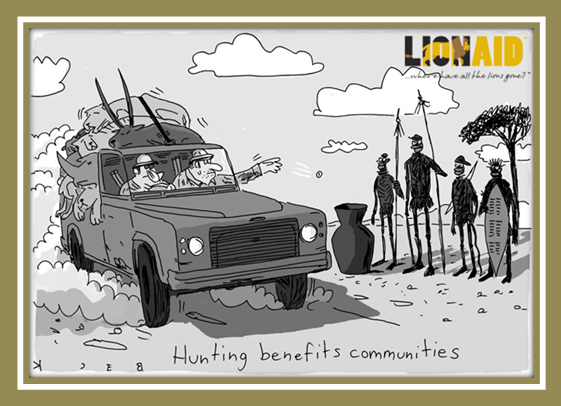|

Each of you earn $7 per year
There are those who say that Namibia is on the right track, and that their model of “involving” communities in wildlife conservation has led to a considerable recent increase in wildlife in the country and especially in the concessions. I guess other factors contributing to wildlife increases, such as weather, were discounted, although rainfall in Namibia was above average for 2000-2009. It would be interesting to see how the recent drought of 2012-2013 affected these optimistic estimates.
But let’s ask how communities are actually benefiting.
Doubtless the overall model of community conservancies is doing well. There are a series of yearly reports that show this. But that is not the question.
Taking information from a 2010 report as an indication, the following numbers are reported:
- 34 conservancies (at that time) were engaging with trophy hunting. Namibia somewhat devolved wildlife ownership on their lands (conservancies) so the communities could take decisions on how to earn money from wildlife. I say “somewhat” because the communities are not the actual “authorities” in any real sense. That remains with government.
- The overall income from trophy hunting activities by communities in 2010 was $1.04 million, so on average each conservancy was paid $30,718, translating to an estimated $7 per community resident per annum.
- Looking at the 2010 CITES export records of trophies for just three species (lion, elephant, leopard) and combining that with the trophy fee (to the government) and the total daily rates to hunt such species (to the operator, but a this is only a minimum estimate of profit as it excludes operator profits from local airline charters, tips and gratuities, rifle hire, ammunition fees, etc) the government earned $2,516,281 and the operators $ 5,115,548 from just those three species.
- Those profits will be much higher for government and operators as a much greater number of species is hunted – cheetah, caracal, buffalo, zebra, kudu, giraffe, eland, oryx, wildebeest etc – and birds. The three I listed are only the most “expensive” on the list. It was estimated that the trophy hunting industry was worth about $45 million in 2007 by the Namibian Professional Hunting Association.
- Taking $45 million to be the minimal worth of the trophy hunting industry in Namibia (to government and operators and other stakeholders), the conservancies being paid $1 million would amount to about 2% of that total. That number is well in line with the estimated 3 or 4% that communities earn from hunting across Africa compared to what operators and governments earn.
- These are highly preliminary estimates based on information available to me through the internet, published reports and scientific journals. I stand to be corrected by an independent evaluation of what the government and hunting operators are actually collecting from wildlife versus what the communities are paid. And what the community perception of such relative distributions might be. However, anyone undertaking such evaluations should be aware of this warning recently issued by the Permanent Secretary of the Ministry of Environment and Tourism Mr Simeon Ngumbo – “Any work being done … in the region by these NGOs and individuals is illegal and cannot be relied on. I urge them to refrain from this irresponsible behaviour before action is taken against them.”
So overall, it would seem that the Namibian conservation success story needs a Chapter 2. The community programmes are now “mature” enough to be subjected to a comprehensive independent analysis of benefits both to the communities and wildlife. And the communities themselves should be “mature” enough to evaluate whether their 2% return on “their” wildlife is acceptable to them.
Only then can Namibia’s community programmes be called a “success”.
Picture credit : Beck
If you have not already signed up to our mailing list, you can add your name here and keep up to date with our ongoing work and, most importantly, DONATE to support our work to conserve the remaining fragile lion populations. Thank you.
|




